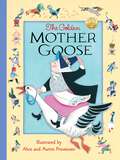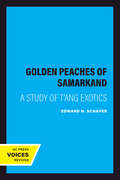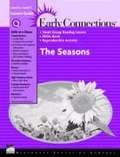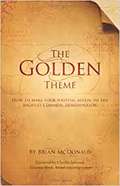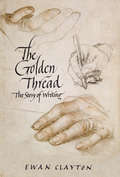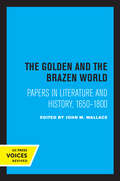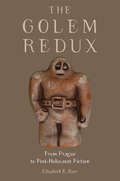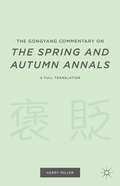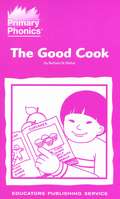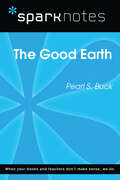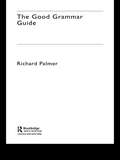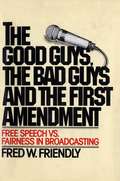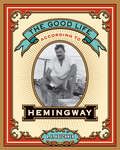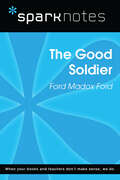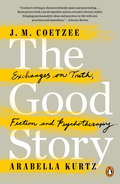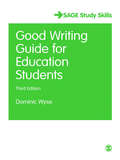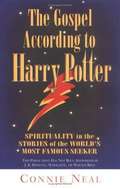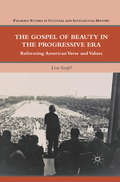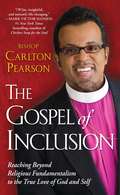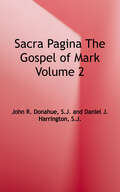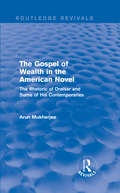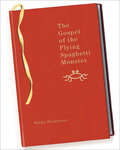- Table View
- List View
The Golden Mother Goose
by Alice Provensen Martin ProvensenA Golden classic, proudly reissued in celebration of the 75th anniversary of Golden Books! Every home needs a book of Mother Goose rhymes! They&’re a child&’s introduction to poetry and a love of language. This Golden Books edition, originally published in 1948, features over a hundred lively rhymes and splendid illustrations by Caldecott Medalists Alice and Martin Provensen. The original artwork has been digitally restored for this edition—resulting in a stunning, best-ever reproduction! It makes a beautiful gift for a beloved child, sure to be read again and again.
The Golden Peaches of Samarkand: A Study of T'ang Exotics
by Edward H. SchaferIn the seventh century the kingdom of Samarkand sent formal gifts of fancy yellow peaches, large as goose eggs and with a color like gold, to the Chinese court at Ch'ang-an. What kind of fruit these golden peaches really were cannot now be guessed, but they have the glamour of mystery, and they symbolize all the exotic things longed for, and unknown things hoped for, by the people of the T'ang empire.This book examines the exotics imported into China during the T'ang Dynasty (A.D. 618-907), and depicts their influence on Chinese life. Into the land during the three centuries of T'ang came the natives of almost every nation of Asia, all bringing exotic wares either as gifts or as goods to be sold. Ivory, rare woods, drugs, diamonds, magicians, dancing girls—the author covers all classes of unusual imports, their places of origin, their lore, their effort on costume, dwellings, diet, and on painting, sculpture, music, and poetry.This book is not a statistical record of commercial imports and medieval trade, but rather a "humanistic essay, however material its subject matter."
The Golden Spike
by Stephen Cosgrove Jackie Urbanovic Pam Hirschfeld Kitty HigginsPerform this script about the linking of the Union Pacific Railroad and the Central Pacific Railroad to form the Transcontinental Railroad.
The Golden Theme: How to Make Your Writing Appeal to the Highest Common Denominator
by Brian McDonaldAt the heart of every great work is an essential commonality, which author and teacher Brian McDonald explores in The Golden Theme. McDonald's previous book, Invisible Ink, has been acclaimed by award winning authors and screenwriters. In The Golden Theme he turns to the question of what makes writing and storytelling essential to us. Readers and writers will benefit from his deep insight. "Brian McDonald is one of the world's wisest teachers of the elements that create great storytelling....If you a writer in any genre, read The Golden Theme. If you are a non-writing reader who just loves stories, read it. If you are a teacher, share it with your students. And give it to friends, who will thank you for the clarity Brian McDonald so generously brings to our lives." - from the Foreword by National Book Award winner Charles Johnson.
The Golden Thread: The Story of Writing
by Ewan ClaytonFrom the simple representative shapes used to record transactions of goods and services in ancient Mesopotamia, to the sophisticated typographical resources available to the twenty-first-century users of desktop computers, the story of writing is the story of human civilization itself.Calligraphy expert Ewan Clayton traces the history of an invention which-ever since our ancestors made the transition from a nomadic to an agrarian way of life in the eighth century BC-has been the method of codification and dissemination of ideas in every field of human endeavour, and a motor of cultural, scientific and political progress. He explores the social and cultural impact of, among other stages, the invention of the alphabet; the replacement of the papyrus scroll with the codex in the late Roman period; the perfecting of printing using moveable type in the fifteenth century and the ensuing spread of literacy; the industrialization of printing during the Industrial Revolution; the impact of artistic Modernism on the written word in the early twentieth century-and of the digital switchover at the century's close. The Golden Thread also raises issues of urgent interest for a society living in an era of unprecedented change to the tools and technologies of written communication. Chief among these is the fundamental question: "What does it mean to be literate in the early twenty-first century?" The book belongs on the bookshelves of anyone who is inquisitive not just about the centrality of writing in the history of humanity, but also about its future; it is sure to appeal to lovers of language, books and cultural history.
The Golden and the Brazen World: Papers in Literature and History, 1650-1800 (Clark Library Professorship, UCLA #10)
by John M. WallaceThis title is part of UC Press's Voices Revived program, which commemorates University of California Press’s mission to seek out and cultivate the brightest minds and give them voice, reach, and impact. Drawing on a backlist dating to 1893, Voices Revived makes high-quality, peer-reviewed scholarship accessible once again using print-on-demand technology. This title was originally published in 1985.
The Golem Redux: From Prague to Post-Holocaust Fiction
by Elizabeth R. BaerTraces the history of the golem legend and its appropriations in German texts and film as well as in post-Holocaust Jewish-American fiction, comics, graphic novels, and television.
The Gongyang Commentary on The Spring and Autumn Annals: A Full Translation
by Harry MillerThis book is a full translation of the Gongyang Commentary on the Spring and Autumn Annals, a history of the Chinese state of Lu from 722 to 481 BCE, annotated so as to highlight the moral philosophy of its supposed writer, Confucius.
The Good Earth (SparkNotes Literature Guide Series)
by SparkNotesThe Good Earth (SparkNotes Literature Guide) by Pearl S. Buck Making the reading experience fun! Created by Harvard students for students everywhere, SparkNotes is a new breed of study guide: smarter, better, faster.Geared to what today's students need to know, SparkNotes provides:chapter-by-chapter analysis explanations of key themes, motifs, and symbols a review quiz and essay topics Lively and accessible, these guides are perfect for late-night studying and writing papers.
The Good Grammar Guide (Routledge Study Guides Ser.)
by Richard PalmerDoes grammar bother you? Does it first inspire boredom, then fear? Since the virtual removal of formal grammar teaching from our schools' standard curriculum forty years ago, such negative responses have increasingly characterised students and professionals alike. As this lively and user-friendly book sets out to prove, that is both unfortunate and unnecessary. Not only is grammar an enabling servant rather than a tyrannical set of absolute rules: it can also be fun. This light-hearted guide offers extensive coverage of Parts of Speech, Syntax, Inflection and Punctuation, along with a detailed look at common errors and misconceptions. Regular exercises are included, as is a baleful survey of Political Correct usage, whose desire to sanitize and control the way we speak is injurious to grammar, language itself and indeed the way we live now. The aim throughout this book is to reassure and entertain as well as instruct. This handy volume puts an amusing light on grammar, and as such it is guaranteed to banish boredom and fear. The Good Grammar Guide can also be read as a companion to one of Richard Palmer's other publications, Write in Style 2nd Edition, also published in Routledge's Study Guides series.
The Good Guys, the Bad Guys and the First Amendment: Free Speech Vs. Fairness in Broadcasting
by Fred W. FriendlyUnlike newspapers, TV and radio broadcasting is subject to government regulation in the form of the FCC and the Fairness Doctrine, which requires stations "to devote a reasonable amount of broadcast time to the discussion of controversial issues" and "to do so farily, in order to afford reasonable opportunity for opposing viewpoints." In this provocative book, Fred W. Friendly, former president of CBS News examines the complex and critical arguments both for and against the Fairness Doctrine by analyzing the legal battles it has provoked.
The Good Life According to Hemingway
by A. E. Hotchner“Scholars and [fans] will delight . . . provide[s] a window into the multifaceted mind of a literary giant. A tasty bonus is roughly 150 mostly rare pix.” —Library JournalIn the fourteen years that A. E. Hotchner traveled with Ernest Hemingway, he collected a lifetime's worth of Hemingway's experiences, anecdotes, and observations on the backs of matchbooks, napkins, and slips of paper. Speaking on everything from war to women to writing, Hemingway's words are at turns funny and poignant, revealing a rich portrait of the American literary giant and the world he took by storm.Complete with black-and-white photographs that cover nearly two decades of Hemingway's life, The Good Life According to Hemingway is an exuberant celebration of his remarkable genius and the chaotic adventure of his life.“[E]ntertaining.” —Publishers Weekly
The Good Soldier (SparkNotes Literature Guide Series)
by SparkNotesThe Good Soldier (SparkNotes Literature Guide) by Ford Maddox Ford Making the reading experience fun! Created by Harvard students for students everywhere, SparkNotes is a new breed of study guide: smarter, better, faster.Geared to what today's students need to know, SparkNotes provides:chapter-by-chapter analysis explanations of key themes, motifs, and symbols a review quiz and essay topics Lively and accessible, these guides are perfect for late-night studying and writing papers.
The Good Story
by J. M. Coetzee Arabella KurtzA fascinating dialogue on the human desire to make up stories between Nobel Prize-winning author J. M. Coetzee and psychotherapist Arabella Kurtz The Good Story is an exchange between a writer with a long-standing interest in moral psychology and a psychotherapist with training in literary studies. Coetzee and Kurtz consider psychotherapy and its wider social context from different perspectives, but at the heart of both their approaches is a fascination with narrative. Working alone, the writer is in control of the story he or she tells. The therapist, on the other hand, collaborates with the patient in telling the story that might reveal the "truth." The authors discuss both individual psychology and the psychology of the group: the school classroom, the gang, the settler nation in which the brutal deeds of the ancestors must be accommodated into a national story. In a meeting of the minds that is illuminating, surprising, and thought provoking, Coetzee and Kurtz explore the human capacity for self-examination--our attempts to understand our own individual life stories as well as our part in the larger story through language.
The Good Story: Exchanges on Truth, Fiction and Psychotherapy
by J. M. Coetzee Arabella KurtzJ.M. Coetzee: What relationship do I have with my life history? Am I its conscious author, or should I think of myself as simply a voice uttering with as little interference as possible a stream of words welling up from my interior?Arabella Kurtz: One way of thinking about psychoanalysis is to say that it is aimed at setting free the narrative or autobiographical imagination.The Good Story is a fascinating dialogue about psychotherapy and the art of storytelling between a writer with a long-standing interest in moral psychology and a psychotherapist with training in literary studies. Coetzee and Kurtz consider psychotherapy and its wider social context from different perspectives, but at the heart of both of their approaches is a concern with narrative. Working alone, the writer is in control of the story he or she tells. The therapist, on the other hand, collaborates with the patient in developing an account of the patient's life and identity that is both meaningful and true.In a meeting of minds that is illuminating and thought-provoking, the authors discuss both individual psychology and the psychology of the group: the school classroom, gangs and the settler nation, in which the brutal deeds of ancestors are accommodated into a national story. Drawing on great writers like Cervantes and Dostoevsky and psychoanalysts like Freud and Melanie Klein, Coetzee and Kurtz explore the human capacity for self-examination, our wish to tell our own life stories and the resistances we encounter along the way.J.M. Coetzee's latest novel, The Schooldays of Jesus, will soon be available from Viking.From the Hardcover edition.
The Good Writing Guide for Education Students (SAGE Study Skills Series)
by Dominic WyseWhether you are returning to studying after a break, or need help adjusting your writing skills to meet the needs of your Education course, this practical, down-to-earth guide will help you improve your literacy skills. Aimed specifically at students on Education courses, this book uses examples of students' work to highlight common problems, and provides guidance on how to improve. There are handy lists of 'Dos and Don'ts' and lots of examples. In this new edition you will find: o an explanation of Master's level criteria, with an example of a student's work with tutorial feedback o more on selective use of the internet o more on the peer-review process, the importance of journals, and an explanation of journal rankings o a new section on defining key terms o additional advice on how to avoid plagiarism. The book also offers practical advice on: o reading widely o how to search for reading materials o carrying out small-scale research projects o structuring academic writing appropriately o improving punctuation, spelling, grammar and use of language o presentation skills It is ideal reading for Foundation Degree and PGCE students, including those studying at Masters level, and all undergraduates on Education degree courses. Anyone wanting to improve their writing will find this book invaluable.
The Gospel According to Harry Potter: Spirituality in the Stories of the World's Most Famous Seeker
by Connie Nealfrom a Review of "The Gospel According to Harry Potter by Connie Neal" by Jonathan Marlowe, pastor of Shiloh United Methodist Church in Granit Quarry, NC Connie Neal goes carefully through the four Harry Potter books that have been published so far, and patiently shows us the same kind of "points of contact" with the Bible that I discussed with the children in my church. These "points of contact" (or "glimmers of the gospel," as she calls them) include how Lily Potter's sacrifice for the sake of her son Harry corresponds to Christ's sacrifice for us on the cross, how Dumbledore's deep wisdom mirrors the character of God, and how evil forces operate through deception and violence. Neal is careful not to treat the Potter series as Christian allegory, acknowledging that the Potter stories are different from C.S. Lewis' Chronicles of Narnia. But she wants to prove that J. K. Rowling was right when she said, "You can find in these stories whatever you are looking for." So many have found evidence of witchcraft and the occult in these stories because that is what they were seeking. But Neal has gone to the same stories looking instead for the gospel, and much to the reader's delight, she has found it.
The Gospel of Beauty in the Progressive Era
by Lisa SzefelSzefel investigates the use of poetry in addressing political reform at the turn of the twentieth century. It charts the work of poets and editors - many of whom were women and minorities - who created a network of organizations to nurture writers who addressed the problems wrought by Progressive-era capitalism.
The Gospel of Inclusion: Reaching Beyond Religious Fundamentalism to the True Love of God and Self
by Carlton PearsonFourth-generation fundamentalist Carlton Pearson, a Christian megastar and host, takes a courageous and controversial stand on religion that proposes a hell-less Christianity and a gospel of inclusion that calls for an end to local and worldwide conflicts and divisions along religious lines.In The Gospel of Inclusion, Bishop Carlton Pearson explores the exclusionary doctrines in mainstream religion and concludes that, according to the evidence of the Bible and irrefutable logic, they cannot be true. Bishop Pearson argues that the controlling dogmas of religion are the source of much of the world's ills and that we should turn our backs on proselytizing and holy wars and focus on the real good news: that we are all bound for glory, everybody is saved, and if we believe God loves all mankind, then we have no choice but to have the same attitude ourselves. Bishop Pearson tells the story of how he had gone from a powerful religious figure, once preaching to an audience of over 6,000 people, to watching everything he had built crumble around him due to a scandal. Why? He didn't steal money nor did he have inappropriate sexual relationships. Following a revelation from God, he began to preach that a loving God would not condemn most of the human race to hell because they are not Christian. He preaches that God belongs to no religion. The Gospel of Inclusion is the inspiring journey of one man's quest to preach a new truth.
The Gospel of Mark (Sacra Pagina Series #2)
by John R. Donahue Daniel J. HarringtonIn The Gospel of Mark, Fathers Donahue and Harrington use an approach that can be expressed by two terms currently used in literary criticism: intratextuality and intertextuality. This intratextual and intertextual reading of Mark''s Gospel helps us to appreciate the literary character, its setting in life, and its distinctive approaches to the Old Testament, Jesus, and early Christian theology. <p><p>"Intratextuality" means we read Mark as Mark and by Mark. Such a reading expresses interest in the final form of the Gospel (not its source or literary history) and in its words and images, literary devices, literary forms, structures, characterization, and plot. Reading Mark by Mark gives particular attention to the distinctive vocabulary and themes that run throughout the Gospel and serve to hold it together as a unified literary production. <p><p>"Intertextuality" comprises the relation between texts and a textual tradition, and also referring to contextual materials not usually classified as texts (e.g., archaeological data). "Intertextuality" is used to note the links of the text of Mark''s Gospel to other texts (especially the Old Testament) and to the life of the Markan community and of the Christian community today.
The Gospel of Wealth in the American Novel: The Rhetoric of Dreiser and Some of His Contemporaries (Routledge Revivals)
by Arun MukherjeeBusiness and the businessman have had a fundamental place in American society since the inception of the nation. This tenet, the ‘gospel of wealth’, is a central concern in the novels of Theodore Dreiser and his contemporaries. First published in 1987, this study sets this group of writers in their historical context and shows how they elaborated the idea of wealth as an object of quasi-religious quest. What had previously been associated with disease and darkness, avarice and dishonour, now came to emblematise the virtues of thrift, prudence and diligence. The underlying argument is that the dominant group of a society legitimises its power through the appropriation of the vocabulary of religion, and the American business leaders were successful in doing this both in their own practice and through the more insidious medium of art. A detailed analysis, this reissue will be of particular value to students of American literature with an interest in the relationship between linguistic symbols and social order, and historical attitudes towards wealth in literature.
The Gospel of the Flying Spaghetti Monster
by Bobby HendersonCAN I GET A “RAMEN” FROM THE CONGREGATION?!Behold the Church of the Flying Spaghetti Monster (FSM), today’s fastest growing carbohydrate-based religion. According to church founder Bobby Henderson, the universe and all life within it were created by a mystical and divine being: the Flying Spaghetti Monster. What drives the FSM’s devout followers, a.k.a. Pastafarians? Some say it’s the assuring touch from the FSM’s “noodly appendage.” Then there are those who love the worship service, which is conducted in pirate talk and attended by congregants in dashing buccaneer garb. Still others are drawn to the Church’s flimsy moral standards, religious holidays every Friday, or the fact that Pastafarian heaven is way cooler: Does your heaven have a Stripper Factory and a Beer Volcano? Intelligent Design has finally met its match–and it has nothing to do with apes or the Olive Garden of Eden.Within these pages, Bobby Henderson outlines the true facts– dispelling such malicious myths as evolution (“only a theory”), science (“only a lot of theories”), and whether we’re really descended from apes (fact: Humans share 95 percent of their DNA with chimpanzees, but they share 99.9 percent with pirates!)See what impressively credentialed top scientists have to say:“If Intelligent Design is taught in schools, equal time should be given to the FSM theory and the non-FSM theory.”–Professor Douglas Shaw, Ph.D. “Do not be hypocritical. Allow equal time for other alternative ‘theories’ like FSMism, which is by far the tastier choice.”–J. Simon, Ph.D.“In my scientific opinion, when comparing the two theories, FSM theory seems to be more valid than classic ID theory.”–Afshin Beheshti, Ph.D.Read the book and decide for yourself!From the Trade Paperback edition.
The Gothic Body
by Kelly HurleyReaders familiar with Dracula and The Strange Case of Dr Jekyll and Mr Hyde may not know that dozens of equally remarkable Gothic texts were written in Great Britain at the end of the nineteenth-century. This book accounts for the resurgence of Gothic, and its immense popularity, during the British fin de siecle. Kelly Hurley explores a key scenario that haunts the genre: the loss of a unified and stable human identity, and the emergence of a chaotic and transformative 'abhuman' identity in its place. She shows that such representations of Gothic bodies are strongly indebted to those found in nineteenth-century biology and social medicine, evolutionism, criminal anthropology, and degeneration theory. Gothic is revealed as a highly productive and speculative genre, standing in opportunistic relation to nineteenth-century scientific and social theories.
